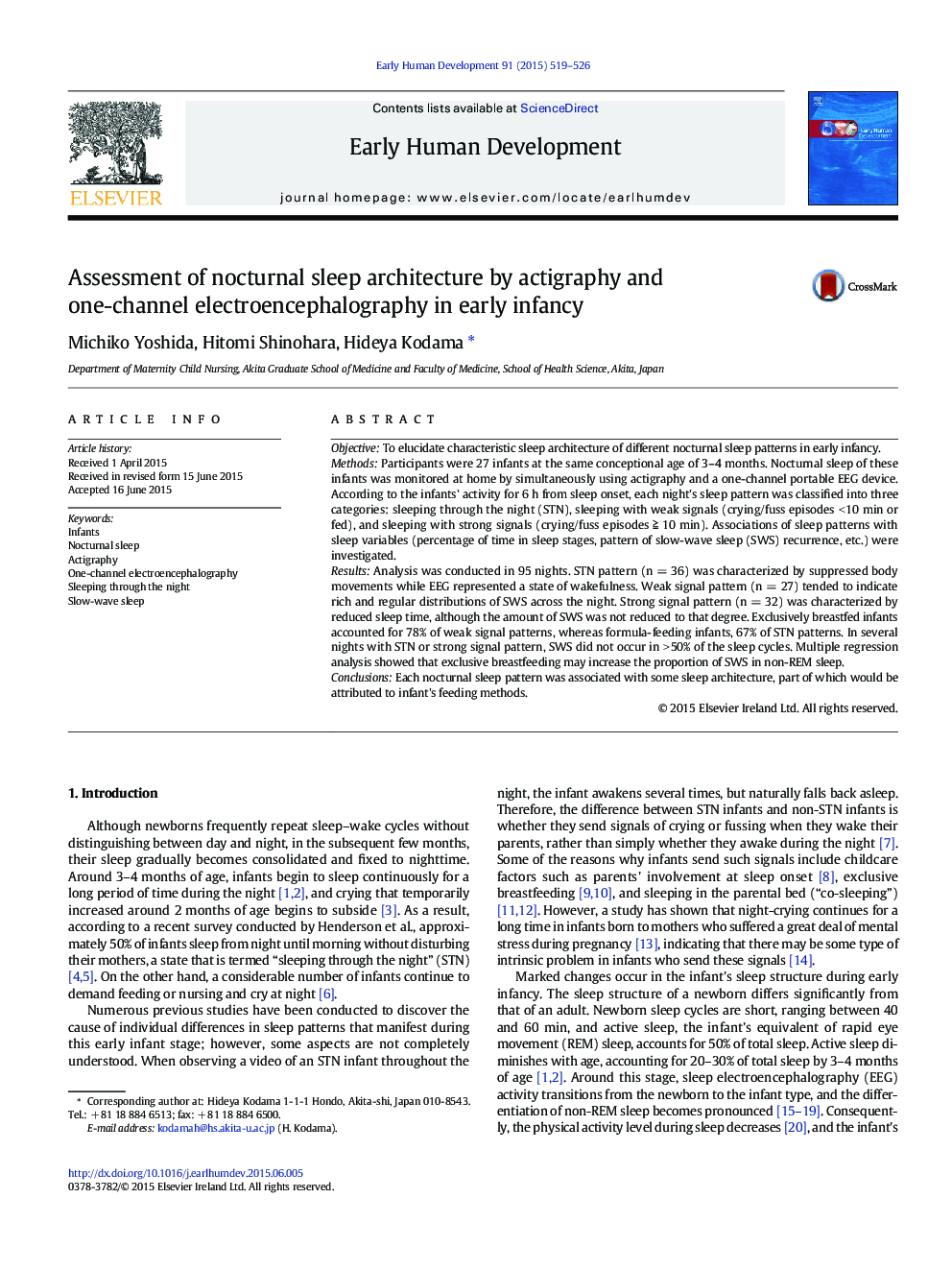| Article ID | Journal | Published Year | Pages | File Type |
|---|---|---|---|---|
| 3916391 | Early Human Development | 2015 | 8 Pages |
•Each nocturnal sleep pattern in early infants had specific sleep architecture.•Sleeping through the night was characterized by suppressed body movements.•Weak signal pattern indicated rich distributions of SWS across the night.•Some infants who send strong signal at night had poor appearance of SWS.•Exclusive breastfeeding may increase the proportion of SWS in non-REM sleep.
ObjectiveTo elucidate characteristic sleep architecture of different nocturnal sleep patterns in early infancy.MethodsParticipants were 27 infants at the same conceptional age of 3–4 months. Nocturnal sleep of these infants was monitored at home by simultaneously using actigraphy and a one-channel portable EEG device. According to the infants' activity for 6 h from sleep onset, each night's sleep pattern was classified into three categories: sleeping through the night (STN), sleeping with weak signals (crying/fuss episodes < 10 min or fed), and sleeping with strong signals (crying/fuss episodes ≧ 10 min). Associations of sleep patterns with sleep variables (percentage of time in sleep stages, pattern of slow-wave sleep (SWS) recurrence, etc.) were investigated.ResultsAnalysis was conducted in 95 nights. STN pattern (n = 36) was characterized by suppressed body movements while EEG represented a state of wakefulness. Weak signal pattern (n = 27) tended to indicate rich and regular distributions of SWS across the night. Strong signal pattern (n = 32) was characterized by reduced sleep time, although the amount of SWS was not reduced to that degree. Exclusively breastfed infants accounted for 78% of weak signal patterns, whereas formula-feeding infants, 67% of STN patterns. In several nights with STN or strong signal pattern, SWS did not occur in > 50% of the sleep cycles. Multiple regression analysis showed that exclusive breastfeeding may increase the proportion of SWS in non-REM sleep.ConclusionsEach nocturnal sleep pattern was associated with some sleep architecture, part of which would be attributed to infant's feeding methods.
